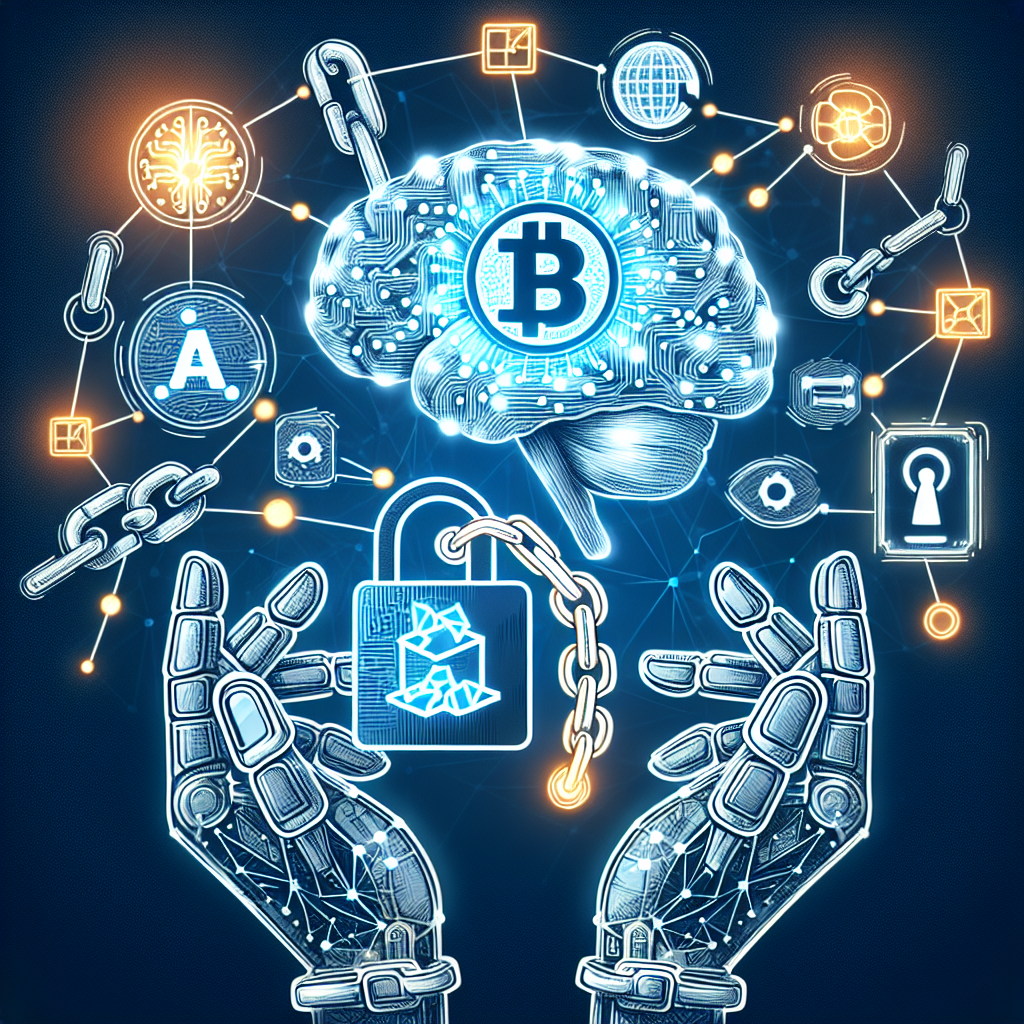In recent years, the combination of artificial intelligence (AI) and blockchain technology has emerged as a powerful tool for revolutionizing the way transactions are conducted and data is managed in the banking industry. AI and blockchain technologies have the potential to enhance security, increase efficiency, and improve transparency in financial transactions. In this article, we will explore the benefits of AI and blockchain in banking, as well as some common questions and concerns surrounding the adoption of these technologies.
AI in Banking:
AI has already made significant strides in the banking industry, with many financial institutions using AI-powered tools to streamline processes, improve customer service, and enhance risk management. AI algorithms can analyze vast amounts of data in real-time, enabling banks to make more informed decisions and detect fraudulent activities more effectively.
One of the key applications of AI in banking is in the area of customer service. AI-powered chatbots and virtual assistants can provide round-the-clock support to customers, answering queries, providing information, and even completing transactions on behalf of customers. This not only improves customer satisfaction but also reduces the workload on human employees, allowing them to focus on more complex tasks.
AI is also being used in credit scoring and risk assessment. By analyzing a customer’s financial history, spending habits, and credit score, AI algorithms can predict the likelihood of default and assign an appropriate credit score. This helps banks make more accurate lending decisions and reduces the risk of loan defaults.
Blockchain in Banking:
Blockchain technology, on the other hand, is a decentralized and transparent system that allows for secure and immutable transactions. In the banking industry, blockchain can be used to streamline processes, reduce costs, and increase security. By creating a decentralized ledger of transactions, blockchain eliminates the need for intermediaries and reduces the risk of fraud.
One of the key benefits of blockchain in banking is its ability to facilitate faster and more secure transactions. By using smart contracts, banks can automate the execution of transactions, reducing the time it takes to complete a transaction and minimizing the risk of errors. Blockchain also provides a secure and tamper-proof record of all transactions, making it easier to trace the flow of funds and verify the authenticity of transactions.
Another key application of blockchain in banking is in the area of identity verification. By using blockchain technology, banks can create a secure and tamper-proof record of customers’ identities, reducing the risk of identity theft and fraud. This not only improves security but also streamlines the onboarding process for new customers.
AI and Blockchain: A Powerful Combination
When AI and blockchain technologies are combined, they create a powerful tool for secure transactions and data management in banking. AI algorithms can analyze vast amounts of data to detect patterns and anomalies, while blockchain technology provides a secure and transparent platform for storing and verifying transactions. By using AI-powered analytics to monitor transactions and blockchain technology to secure the transaction data, banks can significantly enhance security and reduce the risk of fraud.
One of the key benefits of combining AI and blockchain in banking is the ability to create a more efficient and transparent system. By using AI algorithms to analyze transaction data and identify potential risks, banks can proactively address issues before they escalate. The transparency of blockchain technology also makes it easier to trace the flow of funds and verify the authenticity of transactions, reducing the risk of fraud and errors.
Another benefit of combining AI and blockchain in banking is the ability to automate processes and reduce manual intervention. By using AI-powered tools to analyze data and blockchain technology to secure transactions, banks can streamline processes and reduce the time it takes to complete a transaction. This not only improves efficiency but also reduces the risk of human error and fraud.
FAQs:
Q: How secure is blockchain technology in banking?
A: Blockchain technology is highly secure due to its decentralized and transparent nature. Each transaction is recorded on a tamper-proof ledger, making it virtually impossible to alter or delete transaction data. This provides a high level of security and transparency, reducing the risk of fraud and unauthorized access.
Q: What are the challenges of adopting AI and blockchain in banking?
A: One of the key challenges of adopting AI and blockchain in banking is the need for skilled professionals who can develop and implement these technologies. Banks need to invest in training their employees and hiring experts in AI and blockchain to ensure the successful adoption of these technologies. Additionally, regulatory compliance and data privacy concerns can also pose challenges for banks looking to implement AI and blockchain solutions.
Q: How can AI and blockchain improve customer service in banking?
A: AI-powered chatbots and virtual assistants can provide round-the-clock support to customers, answering queries, providing information, and even completing transactions on behalf of customers. This not only improves customer satisfaction but also reduces the workload on human employees, allowing them to focus on more complex tasks. Blockchain technology can also improve customer service by providing a secure and transparent platform for storing and verifying transactions, enhancing trust and transparency in financial transactions.
In conclusion, AI and blockchain technologies have the potential to revolutionize the way transactions are conducted and data is managed in the banking industry. By combining AI-powered analytics with blockchain technology, banks can enhance security, increase efficiency, and improve transparency in financial transactions. While there are challenges to adopting these technologies, the benefits far outweigh the risks, making AI and blockchain a new frontier for secure transactions and data management in banking.

